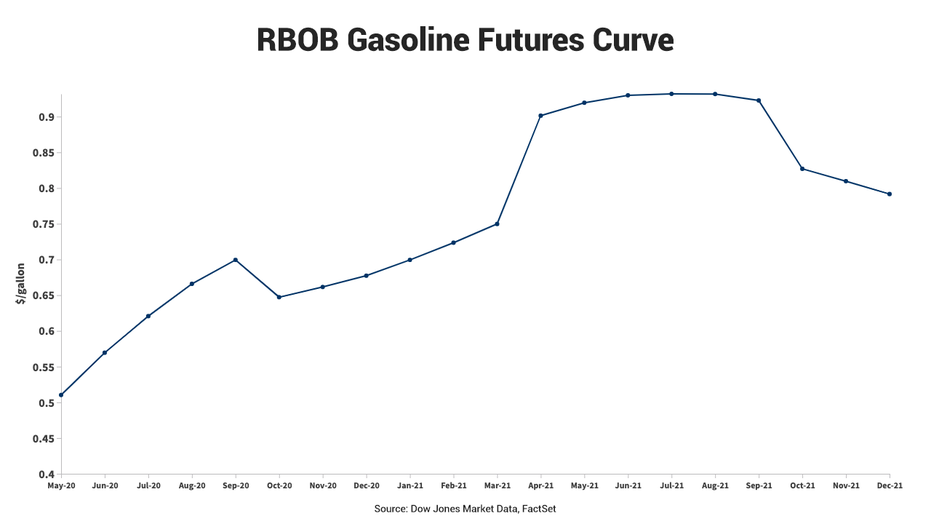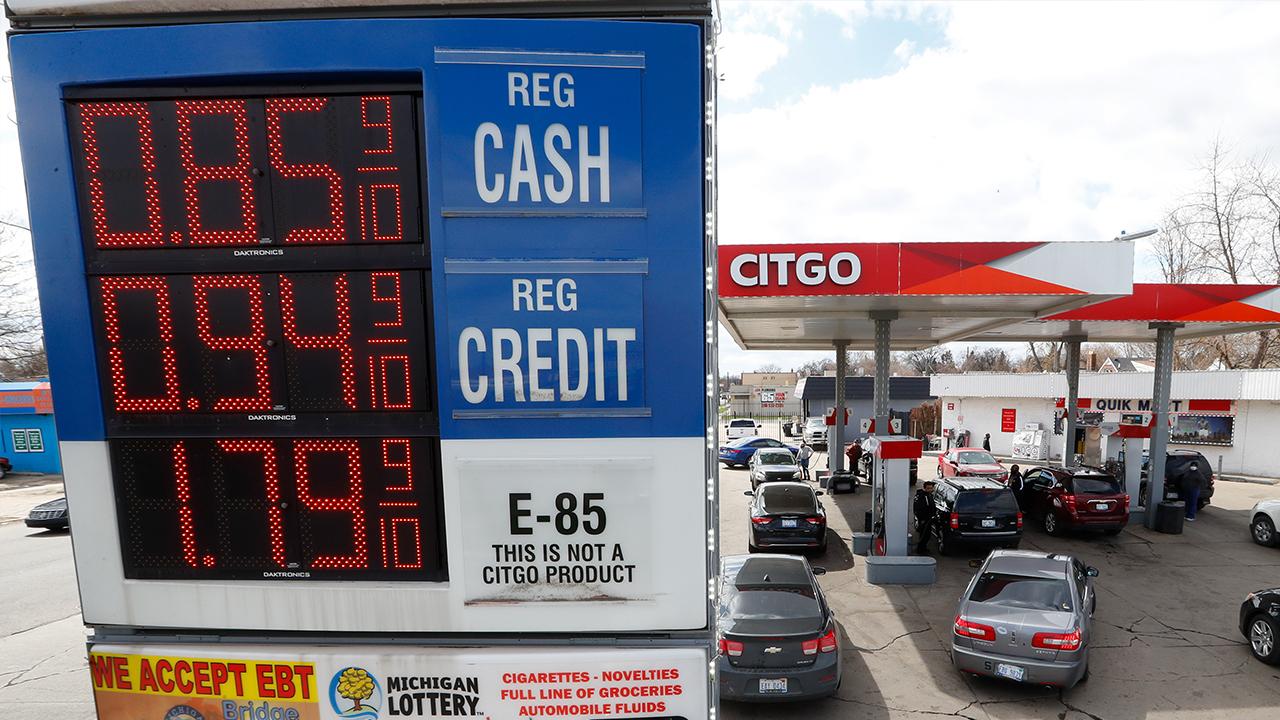Gas prices to stay cheap after coronavirus slide
Prices at the pump are lower than 90 cents a gallon in some parts of the US
Get all the latest news on coronavirus and more delivered daily to your inbox. Sign up here.
Not only are gasoline prices cheaper than they've been in years, thanks in part to the coronavirus shutdown of most economic activity, they're likely to remain that way for the foreseeable future.
Futures contracts for May delivery have plunged 24 percent this year to 51.03 cents per gallon as “stay-at-home” orders issued to slow the spread of COVID-19 kept drivers off the roads, crushing demand for fuel.
To estimate what those futures prices mean for motorists at the pump over the next few weeks, Wall Street typically adds about 60 cents (excluding high-tax states such as New York and California), meaning gas prices appear likely to slide even further below Wednesday's national average of $1.80 a gallon.
And that was already a sharp decline from $2.84 a year earlier, according to AAA.
CORONAVIRUS PRESSURES US MANUFACTURERS TO BRING PLANTS HOME FROM CHINA
“The consumer can expect these low prices to persist over the next three months because the oil market continues to be overwhelmed with supply,” Andrew Lipow, president of the Houston-based consulting firm Lipow Oil Associates, told FOX Business.
“It's not until demand begins its long road to recovery that we're going to see gasoline prices beginning to go up,” he added. "Looking out forward, there is a moderate increase in gasoline futures prices, which is a reflection of the anticipation that the economy will begin to open up, resulting in an improvement in demand."

While some U.S. states have announced plans to begin reopening, others, including New York, have extended “stay-at-home” orders until at least the middle of May, keeping demand at significantly depressed levels -- and prices low -- for at least the next few weeks.
Although prices at the pump average $1.806 nationally, they vary greatly across the country, depending on factors from crude oil, refining and distribution costs to state, local and federal taxes.
Prices in parts of Wisconsin have fallen to less than 90 cents a gallon as refineries in the region use landlocked crudes, causing “too many sellers of crude to chase too little pipeline space,” Stewart Glickman, energy analyst at New York-based CFRA Research, told FOX Business.
That scenario coupled with crude oil flowing in from Canada puts “downward pressure” on pricing in the Midwest, he said.

REUTERS/Stephen Yang (Reuters)
Prices have also been forced below 90 cents a gallon in Oklahoma City, which is close to a key U.S. oil hub in Cushing, Oklahoma, and is “swimming in supply,” according to Glickman.
On the other hand, states such as New York and California are seeing gasoline at $2.21 and $2.80, respectively, as residents shoulder the burden of more than 80 cents a gallon in taxes.
Even when the stay-at-home orders are lifted in high-density states, economic activity is likely to remain depressed as people at least initially err on the side of caution.
The U.S. Energy Information Administration says U.S. gasoline consumption will fall by 19 percent to an average of 7.1 million barrels per day in the second quarter.
The unusually slow summer driving season will push gasoline down to $1.58 per gallon nationally in the April through September period, 42 percent below last year’s $2.72, the EIA said.
It's a level low enough to make travel more attractive, though how that plays out during a disease pandemic remains to be seen.
“History shows that U.S. consumers actually are very sensitive to low gas prices,” Paul Sankey, managing director at Mizuho Securities, told FOX Business.
CLICK HERE TO READ MORE ON FOX BUSINESS
“They absolutely drive more when prices are low,” he added. “Sales of electric cars, efficiency of typical cars, and even levels of employment are far less important to demand than the price at the pump.”




















